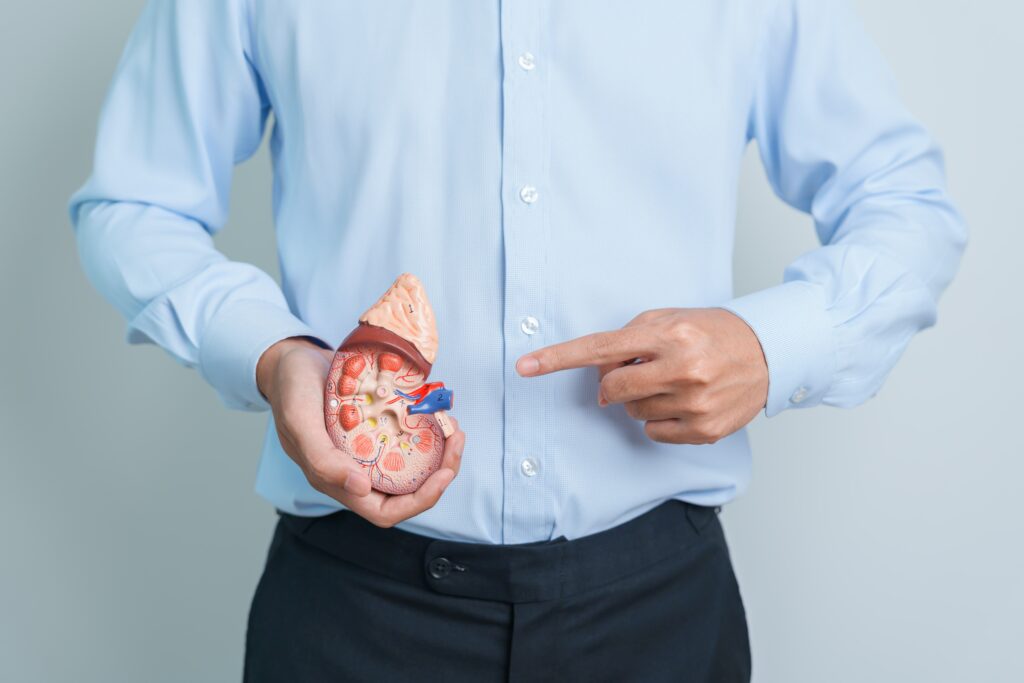Have you ever heard of somebody suffering from stones? Perhaps you have experienced it yourself or know someone who has. When people refer to “stones,” it’s tempting to assume they’re all the same. But did you know that, while gallstones and kidney stones sound similar, they are quite different conditions? Each has its own set of causes, symptoms, and treatments—and understanding them can mean the difference between effectively managing your pain and living in unneeded suffering. Whether you’re here because you’re inquisitive or concerned about your symptoms, this article will explain everything in simple terms. Let’s plunge in!
What Exactly Are Gallstones and Kidney Stones?
Both gallstones and kidney stones are hard deposits that form in the body, although they come from distinct locations and materials.
– Gallstones form in the gallbladder, an organ that stores bile, which is required to digest fats. These stones comprise cholesterol, bile salts, and bilirubin (a byproduct of red blood cells).
– Kidney stones, on the other hand, form in the kidneys, which remove waste and poisons from the blood and generate urine. Kidney stones are composed of crystals of calcium, oxalate, phosphate, or uric acid.
Although they may sound similar, gallstones and kidney stones impact different organs and have distinct causes, symptoms, and treatments.
Symptoms: How to Tell Them Apart
Some symptoms of gallstones and kidney stones may overlap, such as nausea, vomiting, fever, chills, and an overall sense of unease. However, their pain patterns can help distinguish individuals.
Pain Location
– Gallstones produce pain in the upper right side of your abdomen, between the ribs, which frequently extends to your right shoulder or between your shoulder blades. The discomfort usually starts quickly and lasts for many minutes to hours. You may notice it after eating a high-fat meal, which stimulates the gallbladder to secrete bile.
– Kidney stones, on the other hand, create severe, excruciating pain in your lower back or sides (flank pain), which can spread to your lower belly and groin as the stone passes through the urinary system. Unlike gallstone pain, kidney stone pain occurs in waves and varies in intensity.
Unique Symptoms
-Gallstones can cause yellowing of the skin or eyes (jaundice) if they clog the bile duct. You may also have indigestion or bloating, particularly after meals.
– Kidney stones can produce blood in the urine (hematuria), and you may feel compelled to urinate frequently or suffer discomfort while doing so.
Who’s at Risk?
Understanding your risk factors can help you take precautions to avoid these illnesses.
Gallstones:
– Women over 40, especially those who are Hispanic or Native American.
– People who have diabetes, are obese or are losing weight rapidly.
– Women on hormone replacement therapy or birth control tablets, as estrogen can raise cholesterol levels in bile.
Kidney stones
– Men over forty. Men are more likely than women to acquire kidney stones.
– People who are dehydrated or consume excessive amounts of sodium, protein, or sugar, which might cause crystal formation.
– Individuals with a family history of kidney stones. If you’ve already had one, you have a 50% risk of developing another within the next decade
Causes: What’s Behind the Formation of Stones?
The foods and beverages we consume have a substantial impact on both conditions, although the specific causes differ.
– High-cholesterol and low-fibre diets frequently result in gallstones. Skipping meals or losing weight quickly can increase the risk.
– Kidney stones form when the urine contains a high concentration of minerals and salts such as calcium, oxalate, and uric acid. This can happen if you don’t drink enough water or eat an oxalate-rich diet.
Treatment Options
Gallstones are generally treated based on whether they produce symptoms. Silent gallstones may not need to be treated, but if you’re in discomfort, your doctor may prescribe gallbladder removal surgery. In less severe cases, medicines to dissolve the stones may be a possibility.
Treatment for kidney stones ranges from pain management and drinking plenty of fluids to more intrusive procedures such as shock wave lithotripsy (which breaks up stones) or surgery for larger stones.
Conclusion
Understanding the distinction between gallstones and kidney stones is critical for successful treatment and prevention. While some symptoms are similar, the location, type of pain, and risk factors differ. If you’re unsure about your symptoms, go to your doctor. Early detection and treatment of stones can help to avoid more significant consequences later on.
Do you think you might be at risk for stones? Don’t put off protecting your health any longer—take action right away! To avoid these uncomfortable situations, remain hydrated, consume a balanced diet, and maintain a consistent wellness routine.







